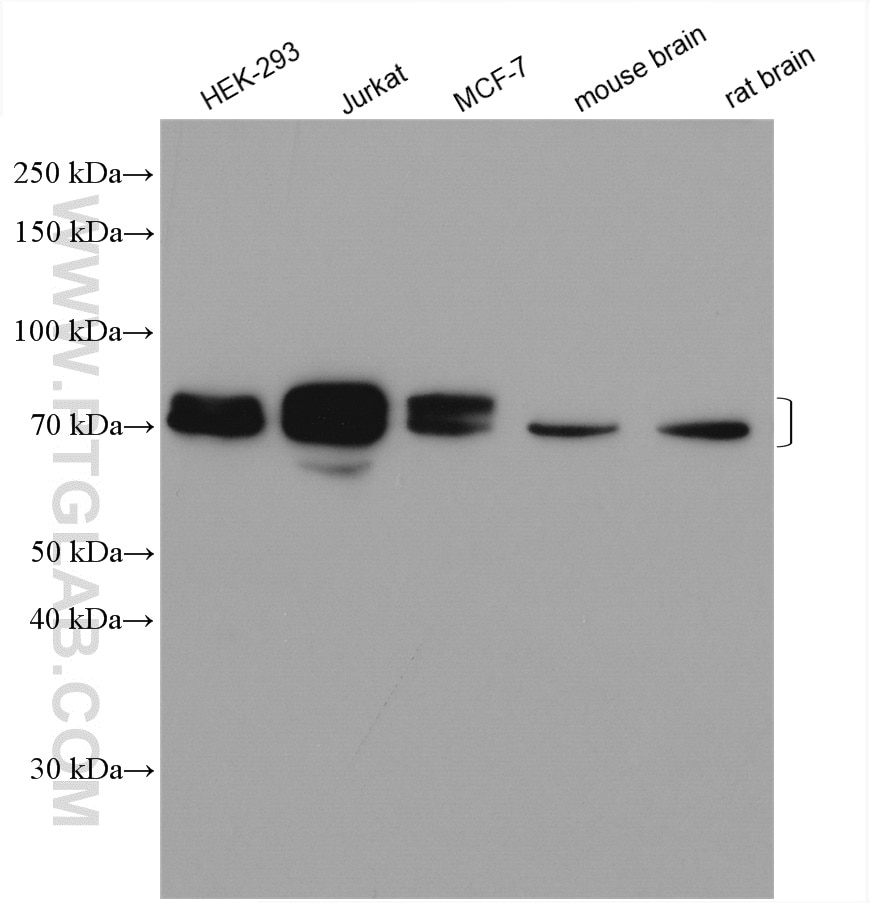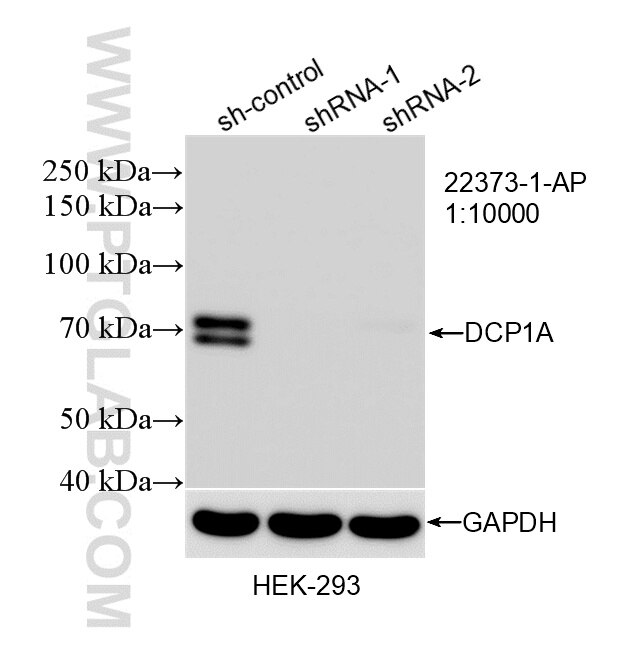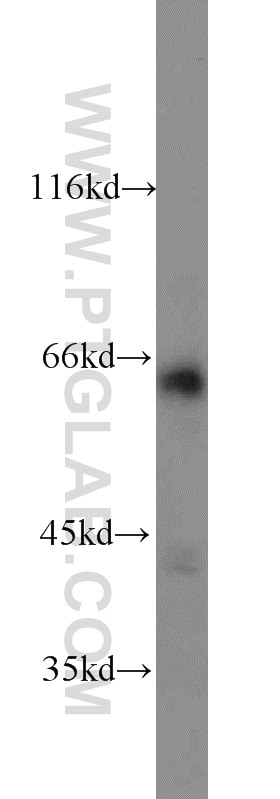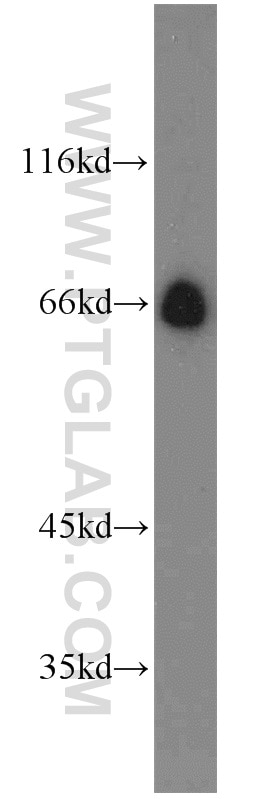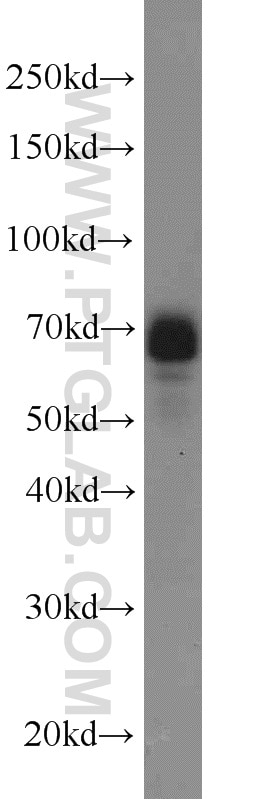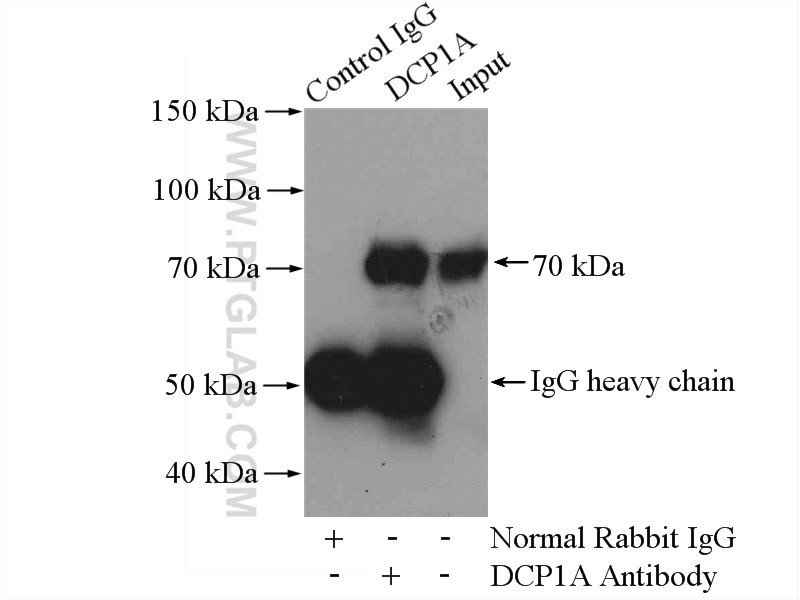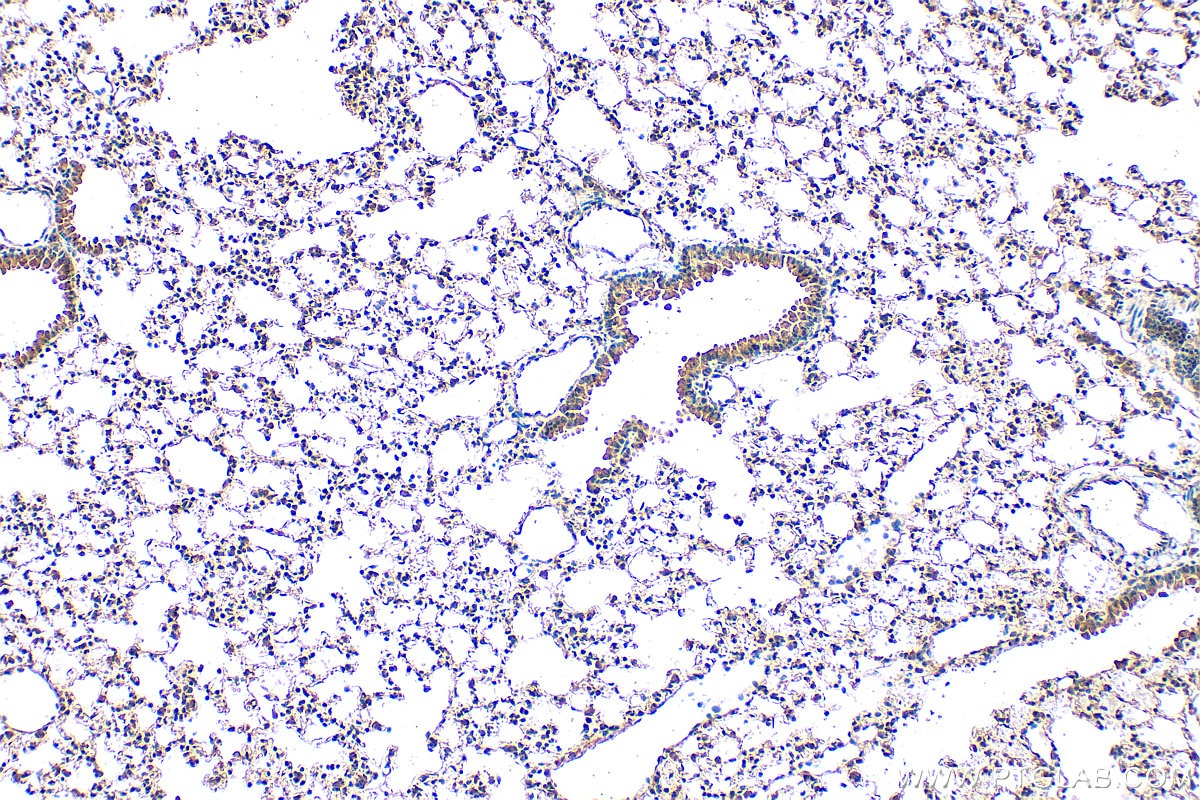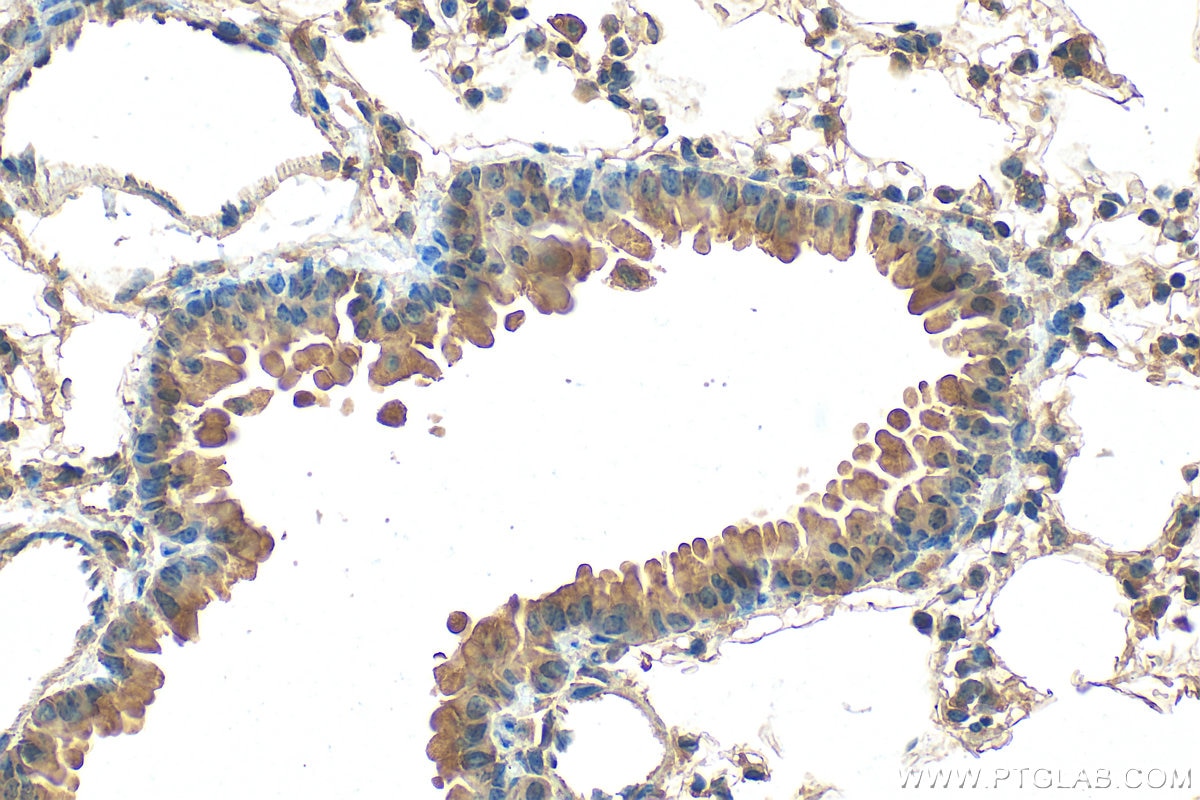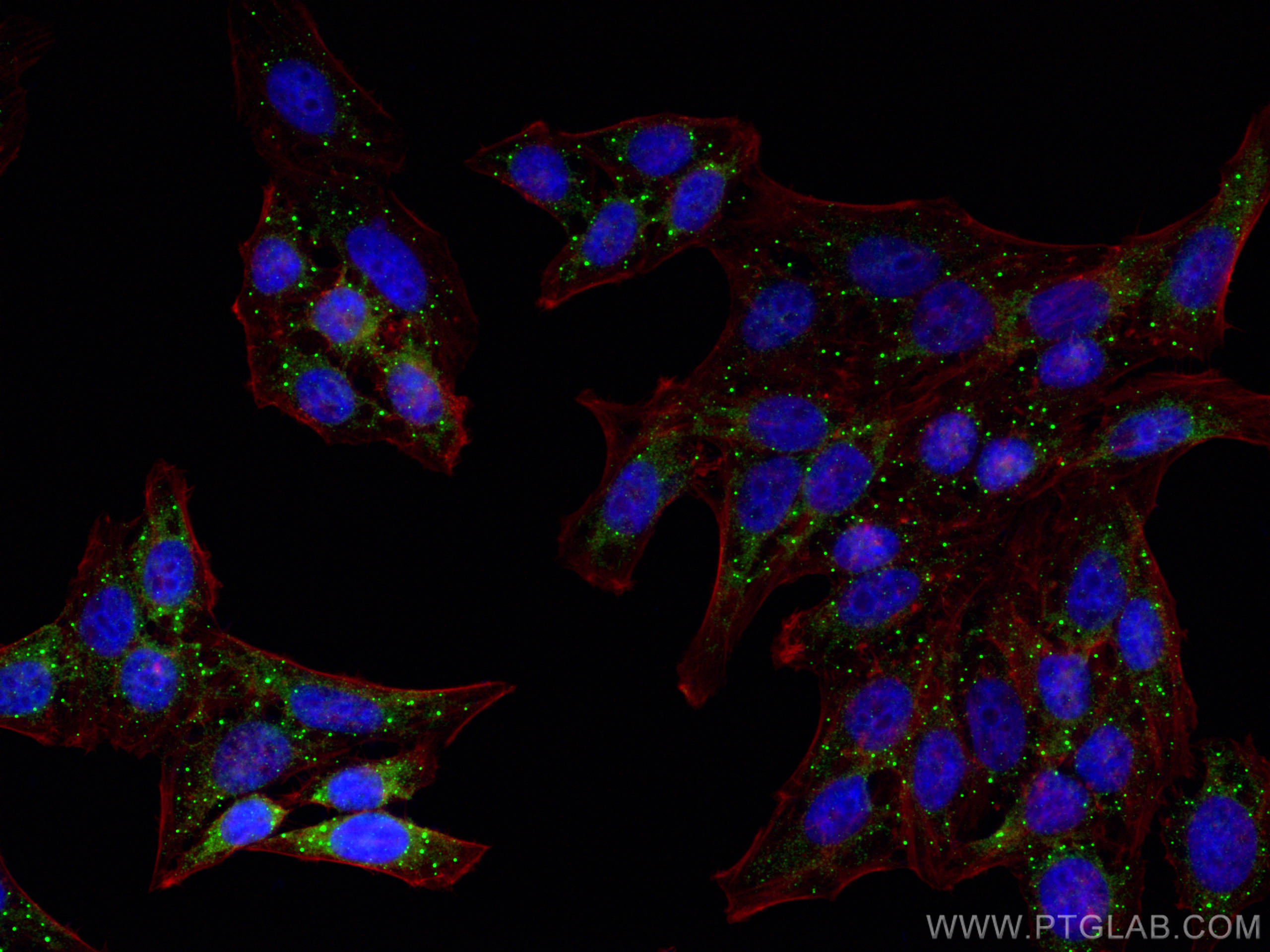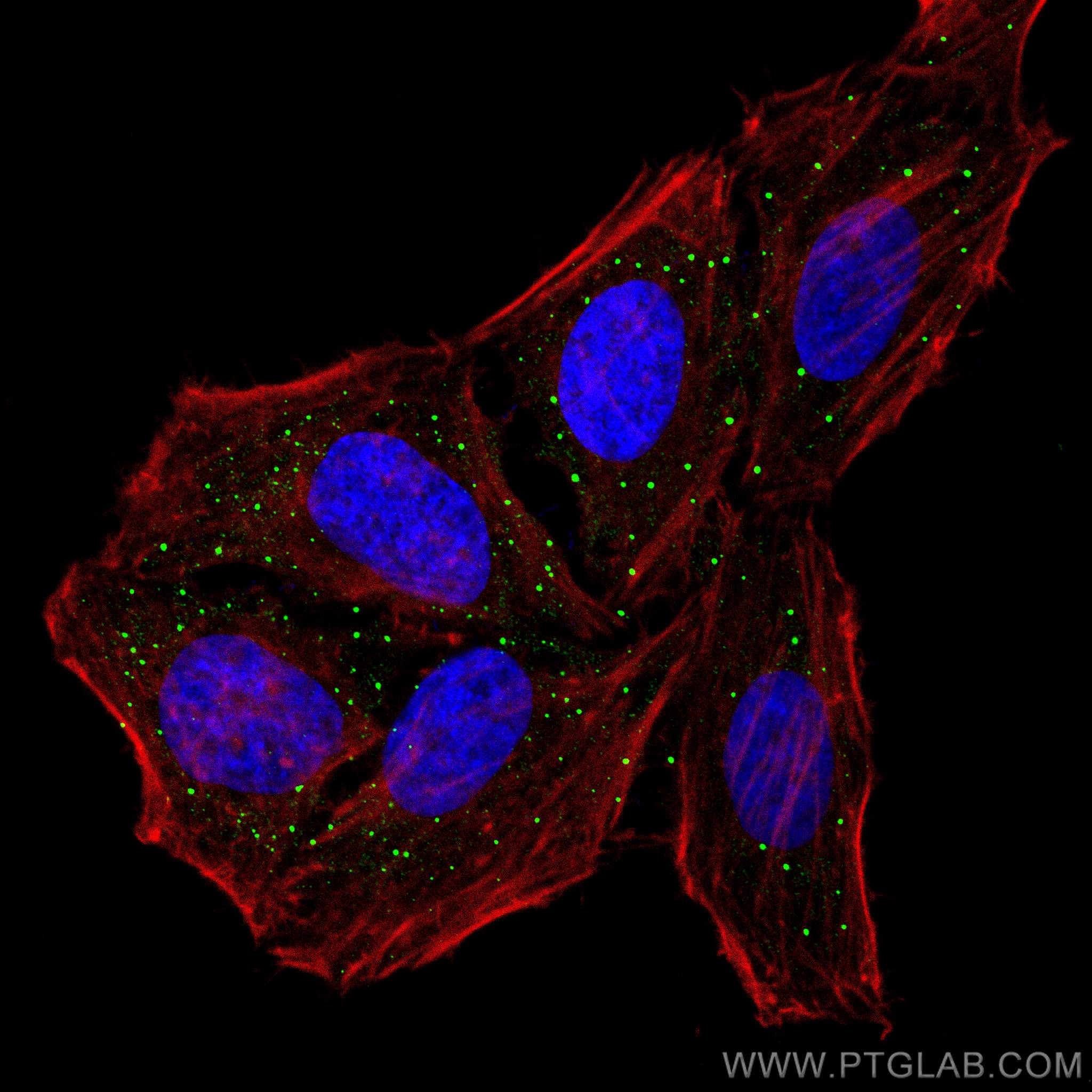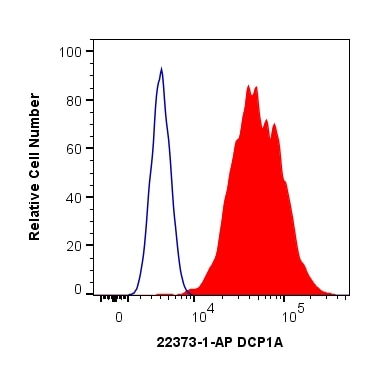Validation Data Gallery
Tested Applications
| Positive WB detected in | HEK-293 cells, Jurkat cells, mouse brain tissue, mouse lung tissue, MCF-7 cells, rat brain tissue |
| Positive IP detected in | mouse brain tissue |
| Positive IHC detected in | mouse lung tissue Note: suggested antigen retrieval with TE buffer pH 9.0; (*) Alternatively, antigen retrieval may be performed with citrate buffer pH 6.0 |
| Positive IF/ICC detected in | HepG2 cells |
| Positive FC (Intra) detected in | HeLa cells |
Recommended dilution
| Application | Dilution |
|---|---|
| Western Blot (WB) | WB : 1:2000-1:10000 |
| Immunoprecipitation (IP) | IP : 0.5-4.0 ug for 1.0-3.0 mg of total protein lysate |
| Immunohistochemistry (IHC) | IHC : 1:50-1:500 |
| Immunofluorescence (IF)/ICC | IF/ICC : 1:200-1:800 |
| Flow Cytometry (FC) (INTRA) | FC (INTRA) : 0.40 ug per 10^6 cells in a 100 µl suspension |
| It is recommended that this reagent should be titrated in each testing system to obtain optimal results. | |
| Sample-dependent, Check data in validation data gallery. | |
Published Applications
| WB | See 8 publications below |
| IF | See 5 publications below |
| IP | See 1 publications below |
| RIP | See 2 publications below |
Product Information
22373-1-AP targets DCP1A in WB, IHC, IF/ICC, FC (Intra), IP, RIP, ELISA applications and shows reactivity with human, mouse, rat samples.
| Tested Reactivity | human, mouse, rat |
| Cited Reactivity | human, mouse |
| Host / Isotype | Rabbit / IgG |
| Class | Polyclonal |
| Type | Antibody |
| Immunogen |
CatNo: Ag18027 Product name: Recombinant human DCP1A protein Source: e coli.-derived, PGEX-4T Tag: GST Domain: 1-350 aa of BC007439 Sequence: MEALSRAGQEMSLAALKQHDPYITSIADLTGQVALYTFCPKANQWEKTDIEGTLFVYRRSASPYHGFTIVNRLNMHNLVEPVNKDLEFQLHEPFLLYRNASLSIYSIWFYDKNDCHRIAKLMADVVEEETRRSQQAARDKQSPSQANGCSDHRPIDILEMLSRAKDEYERNQMGDSNISSPGLQPSTQLSNLGSTETLEEMPSGSQDKSAPSGHKHLTVEELFGTSLPKEQPAVVGLDSEEMERLPGDASQKEPNSFLPFPFEQLGGAPQSETLGVPSAAHHSVQPEITTPVLITPASITQSNEKHAPTYTIPLSPVLSPTLPAEAPTAQVPPSLPRNSTMMQAVKTTPR 相同性解析による交差性が予測される生物種 |
| Full Name | DCP1 decapping enzyme homolog A (S. cerevisiae) |
| Calculated molecular weight | 582 aa, 63 kDa |
| Observed molecular weight | 70 kDa |
| GenBank accession number | BC007439 |
| Gene Symbol | DCP1A |
| Gene ID (NCBI) | 55802 |
| RRID | AB_2879092 |
| Conjugate | Unconjugated |
| Form | |
| Form | Liquid |
| Purification Method | Antigen Affinity purified |
| UNIPROT ID | Q9NPI6 |
| Storage Buffer | PBS with 0.02% sodium azide and 50% glycerol{{ptg:BufferTemp}}7.3 |
| Storage Conditions | Store at -20°C. Stable for one year after shipment. Aliquoting is unnecessary for -20oC storage. |
Background Information
DCP1 decapping enzyme homolog A (S. cerevisiae), known as mRNA-decapping enzyme 1A (DCP1A),is necessary for the degradation of mRNAs, both in normal mRNA turnover and in nonsense-mediated mRNA decay. Removes the 7-methyl guanine cap structure from mRNA molecules, yielding a 5'-phosphorylated mRNA fragment and 7m-GDP. Contributes to the transactivation of target genes after stimulation by TGFB1. This antibody specifically react with the 70kd DCP1A protein.
Protocols
| Product Specific Protocols | |
|---|---|
| FC protocol for DCP1A antibody 22373-1-AP | Download protocol |
| IF protocol for DCP1A antibody 22373-1-AP | Download protocol |
| IHC protocol for DCP1A antibody 22373-1-AP | Download protocol |
| IP protocol for DCP1A antibody 22373-1-AP | Download protocol |
| WB protocol for DCP1A antibody 22373-1-AP | Download protocol |
| Standard Protocols | |
|---|---|
| Click here to view our Standard Protocols |
Publications
| Species | Application | Title |
|---|---|---|
Cell Rep Vault RNAs aid RNA virus infection by facilitating cytoplasmic localization of hnRNP C and ELAVL1 | ||
J Proteome Res Quantitative Proteomics Reveal the Mechanism of MiR-138-5p Suppressing Cervical Cancer via Targeting ZNF385A | ||
J Thorac Dis LncRNA HOXD-AS2 regulates miR-3681-5p/DCP1A axis to promote the progression of non-small cell lung cancer | ||
Cell Rep DIAPH3 condensates formed by liquid-liquid phase separation act as a regulatory hub for stress-induced actin cytoskeleton remodeling | ||

